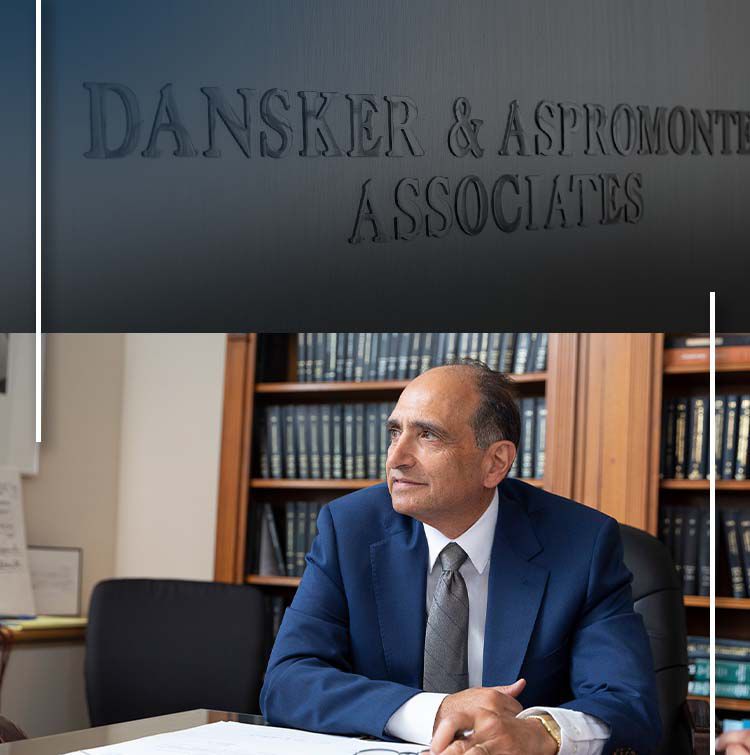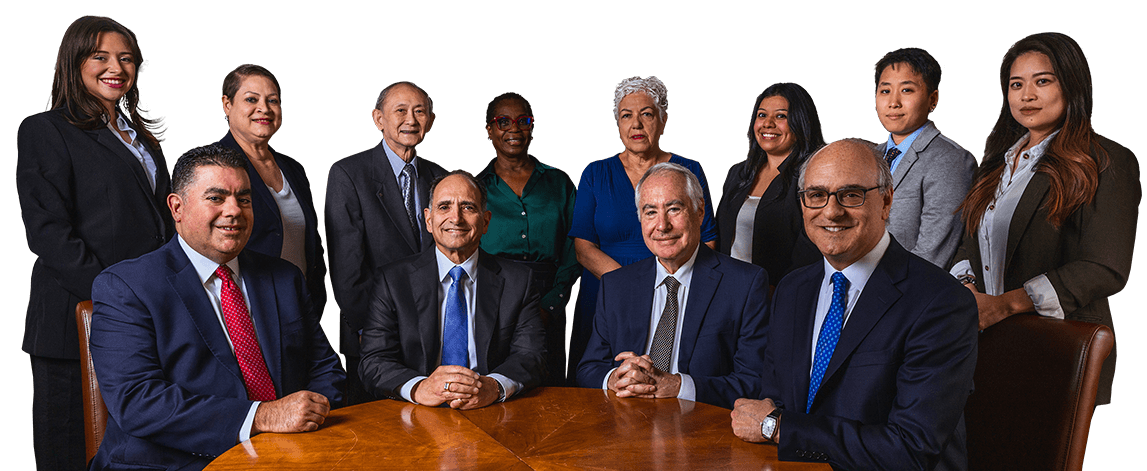Menu
We Speak Español & 中文 (212) 732-2929
Menu

Your brain is the most important organ in your body. It acts as the control center for all of the voluntary and involuntary actions in which your mind and body engage. When damaged, the consequences can be devastating. Depending on the type and severity of the injury, you may suffer adverse effects for days, months, years, or even permanently. When injured due to another party’s negligent, careless, or even deliberate actions, the burdens associated with such a serious injury should not be yours to carry alone. Fortunately, personal injury laws have been established to protect you in such circumstances.
If you or someone you love has suffered a traumatic brain injury in the greater New York area, you can turn to Dansker & Aspromonte Associates LLP for trusted and proven legal help. Our firm has been representing personal injury clients since 1986. We are a team that works like a family and treats you like family when under our care. We are small enough to make personalized client attention a definitive priority while earning a reputation for being a hard-hitting litigation firm. Our team brings 100+ years of experience to your case. Because we prepare all cases for trial, the other side knows that we mean business and will aggressively pursue optimum compensation for our clients.
Contact Dansker & Aspromonte Associates LLP to schedule a free initial consultation with a New York traumatic brain injury attorney by calling us at (212) 732-2929.
Traumatic brain injuries (TBIs) are damage to the brain as the result of blunt force impact or penetration of the skull. Damage to the brain can be caused by resulting brain swelling and hemorrhages, concussions, or fractured skulls, disrupting the brain’s ability to function. This can lead to temporary or permanent neurological damage, traumatic epilepsy, and other serious debilitating effects. After a severe head injury, you may suffer extensive damage to your quality of life, experience severe pain, and require surgeries, other treatments, or rehabilitation. Medical care for traumatic brain injuries can cause catastrophic medical bills and lost wages.
TBIs can be classified as open or closed. Closed-head injuries stem from the brain violently striking the skull wall when hit or from physical wounds to the head. Open-head brain injuries occur when the skull bones are fractured or broken causing damage to the brain’s soft tissue underneath.
Examples of TBIs that our attorneys have handled include:
Even if you believe you have suffered only a minor concussion, you should always take any brain injury seriously. Effects may not manifest immediately and damage can be more severe than you understand. Ensuring you have proper medical attention in the aftermath of any blow to the head is essential.
The temporary or permanent effects of a brain injury can vary from person to person, depending on the injury’s circumstances and severity.
These effects can include but are not limited to:
These types of disabilities can totally disrupt your life, impair your ability to work and remain self-supporting, and require personal at-home assistance. Lack of income and spiraling expenses can lead to financial ruin without the resources needed to meet the demands of such a serious injury.
Recovery from a traumatic brain injury (TBI) involves a comprehensive approach that often includes medical treatment, rehabilitation, and support. Here’s a breakdown of the treatment involved:
Every traumatic brain injury is unique, and the treatment plan is tailored to the individual’s specific needs, the severity of the injury, and any associated complications. Patients and their families need to work closely with healthcare professionals to ensure the best possible outcomes.
The temporary or permanent effects of a brain injury can vary from person to person, depending on the injury’s circumstances and severity.
These effects can include but are not limited to:
These types of disabilities can totally disrupt your life, impair your ability to work and remain self-supporting, and require personal at-home assistance. Lack of income and spiraling expenses can lead to financial ruin without the resources needed to meet the demands of such a serious injury.
Recovery from a traumatic brain injury (TBI) involves a comprehensive approach that often includes medical treatment, rehabilitation, and support. Here’s a breakdown of the treatment involved:
Every traumatic brain injury is unique, and the treatment plan is tailored to the individual’s specific needs, the severity of the injury, and any associated complications. Patients and their families need to work closely with healthcare professionals to ensure the best possible outcomes.
Dansker & Aspromonte Associates LLP is here to help you hold at-fault parties accountable for the losses you have sustained. Our New York traumatic injury lawyers are here to help, backed by decades of fighting for injury victims.
Call us today at (212) 732-2929 to learn more about your case and options in a free evaluation. You pay nothing unless we win your case.
TBIs can occur in anyone. According to the Brain Injury Association of New York State, an average of 48,357 children under 19 visit the emergency room for a traumatic brain injury every year. The majority of TBIs in children result from sports and recreational activities.
For New York adults, TBIs are frequently caused by:
The team at our injury law firm has experience handling TBI cases involving clients of all ages, from infants to those over 65. If a negligent party caused your trauma, we can fight for fair and reasonable compensation for your damages.
Sorting out your finances while working to overcome a brain injury can be overwhelming. However, with a qualified New York traumatic brain injury attorney on your side, you can pursue fair compensation to recover all of your physical, emotional, and economic losses.
When we agree to accept cases, this is what we do:
Our attorneys bring extensive experience to a range of personal injury cases, including car and construction accidents, catastrophic injuries, wrongful death, and more.
A four-year-old boy was brought to the hospital for a routine eyelid repair. To cut costs, the hospital contracted out its anesthesia services to a third-party corporation.
This accident occurred in the Bronx when our client was working on a sanitation truck. The driver lost control while making a turn. Our client was ejected and the truck ran over his leg.
A 22-year-old theater intern was walking across the intersection of 42nd Street and Ninth Avenue in Manhattan when she was struck by the rear door of a passing truck which had flown open because it had been improperly secured by the driver.
A 35-year-old New York City Police officer was admitted to Jacobi Hospital with head and limb injuries after a collision.
Read Our Personal Injury Blog

We serve clients throughout the New York City Metropolitan area, including Manhattan, Brooklyn, the Bronx, Queens, Staten Island,
and Nassau and Suffolk Counties. Contact us for help today.